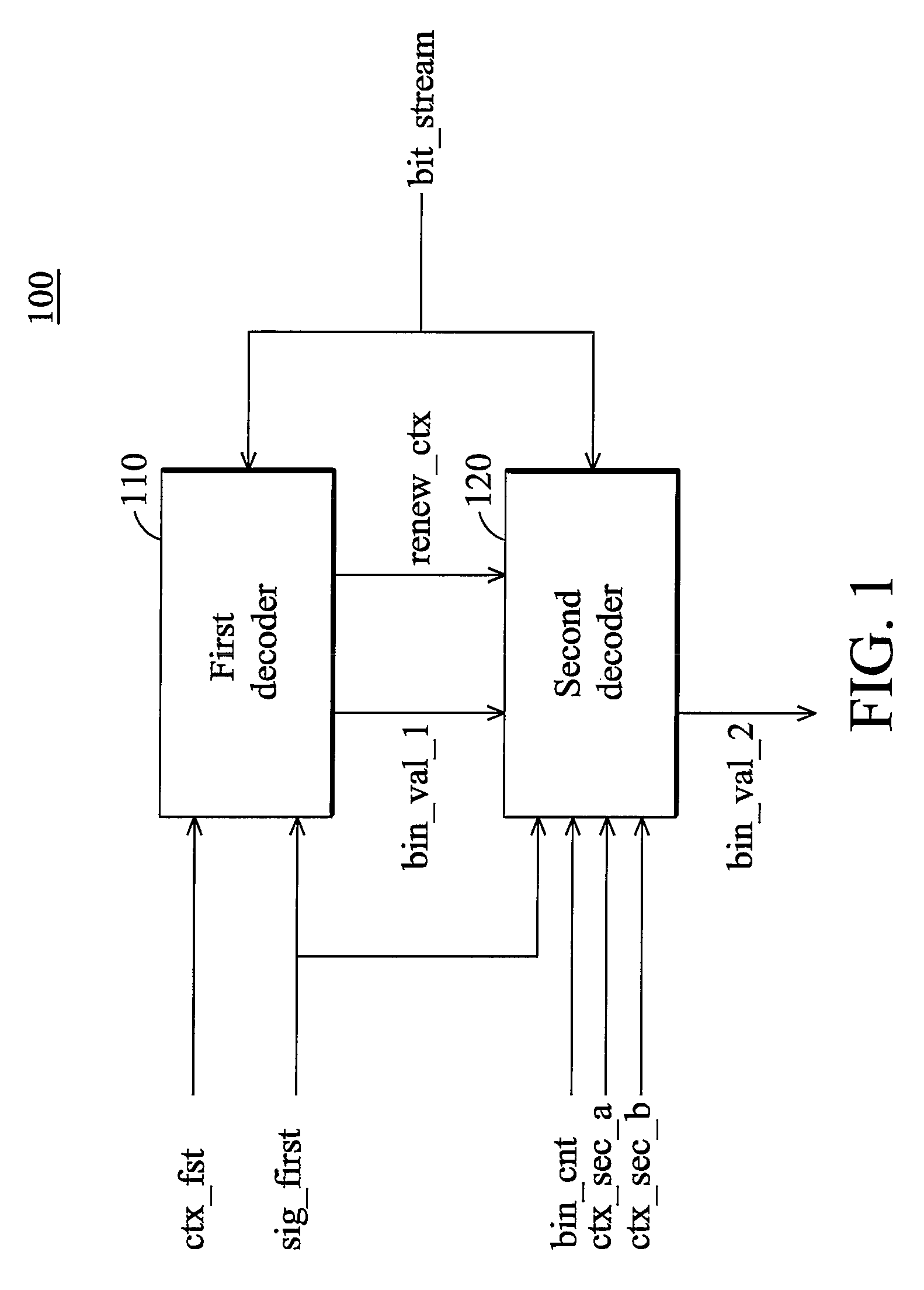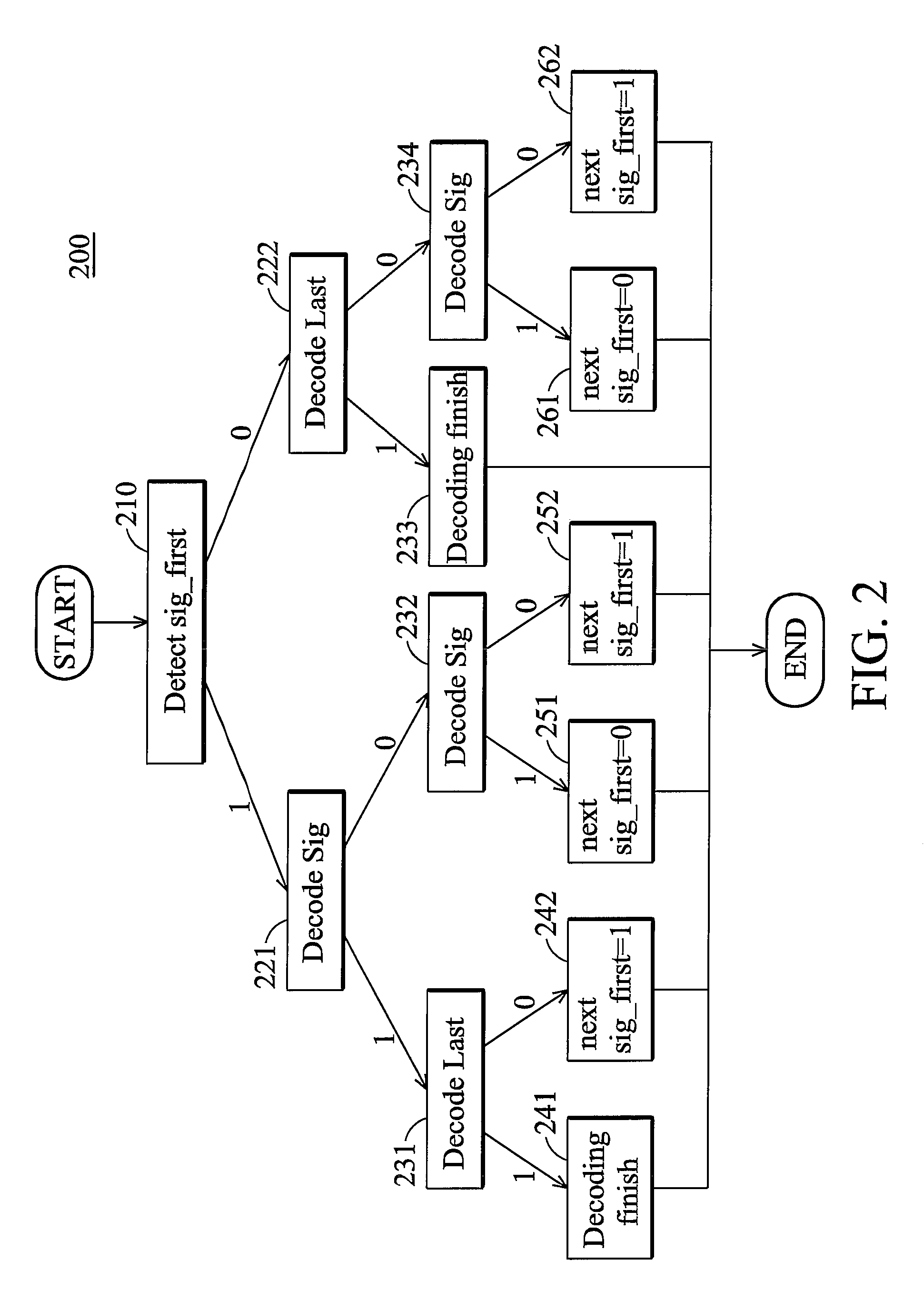CABAC decoding unit and method
a decoding unit and cabac technology, applied in the field of decoding methods, can solve the problems of increasing the probability of encoding speed and decoding speed being hindered, increasing the complexity of the cabac of h.264/avc video coding standard, and increasing the operational frequency of the corresponding hardwar
- Summary
- Abstract
- Description
- Claims
- Application Information
AI Technical Summary
Benefits of technology
Problems solved by technology
Method used
Image
Examples
Embodiment Construction
[0018]The following description is of the best-contemplated mode of carrying out the invention. This description is made for the purpose of illustrating the general principles of the invention and should not be taken in a limiting sense. The scope of the invention is best determined by reference to the appended claims.
[0019]With regard to the decoding of the H.264 CABAC specification, a CABAC decoding unit receives and decodes a bitstream to generate a stream of bins. The syntax value can be interpreted by decoding the stream of bins according the binarization method related to the syntax element. In H.264 / AVC video standard, three syntax elements are utilized in coding block residual, including a first coefficient flag (significant_coeff_flag, Sig), a second coefficient flag (last_significant_coeff_flag, Last) and a corresponding coefficient value. Each syntax element: the first coefficient flag (Sig), the second coefficient flag (Last) and the corresponding coefficient value, resp...
PUM
 Login to View More
Login to View More Abstract
Description
Claims
Application Information
 Login to View More
Login to View More - R&D
- Intellectual Property
- Life Sciences
- Materials
- Tech Scout
- Unparalleled Data Quality
- Higher Quality Content
- 60% Fewer Hallucinations
Browse by: Latest US Patents, China's latest patents, Technical Efficacy Thesaurus, Application Domain, Technology Topic, Popular Technical Reports.
© 2025 PatSnap. All rights reserved.Legal|Privacy policy|Modern Slavery Act Transparency Statement|Sitemap|About US| Contact US: help@patsnap.com



